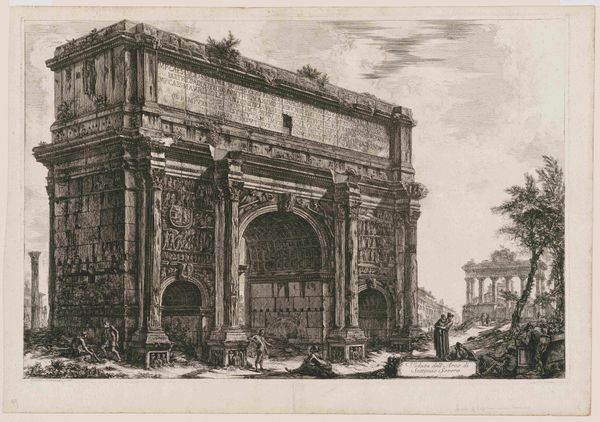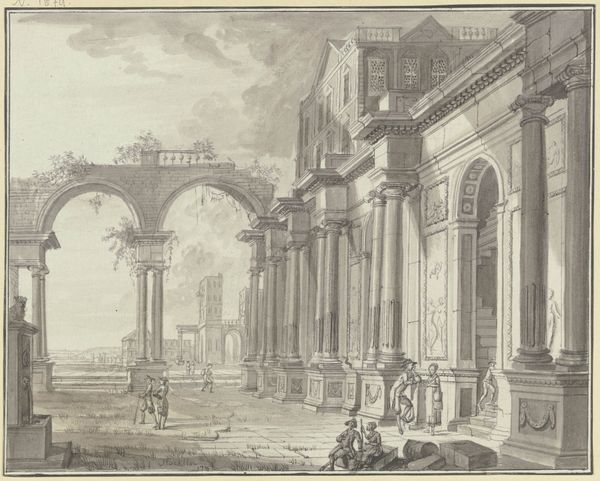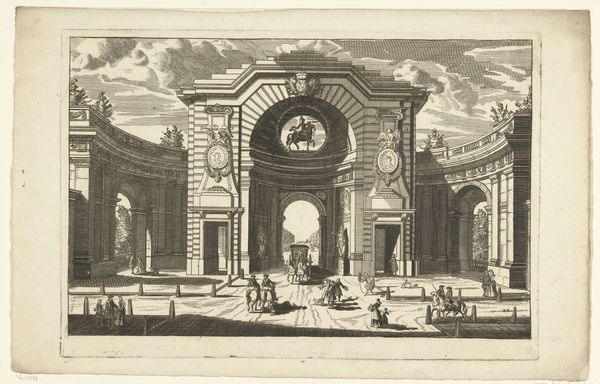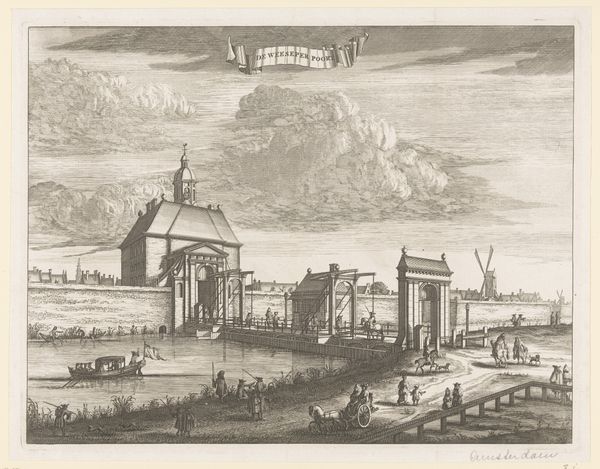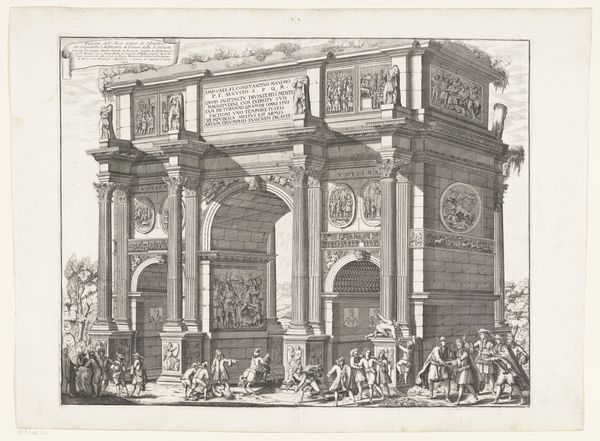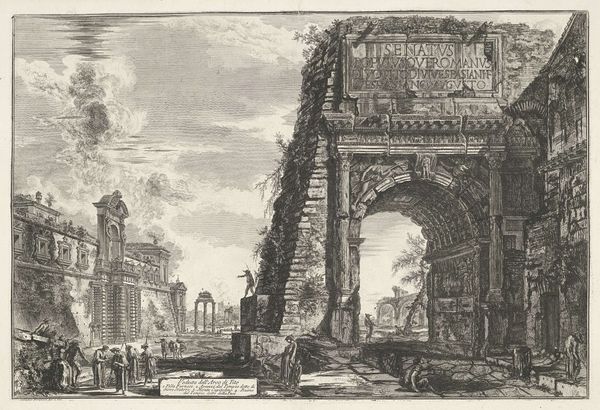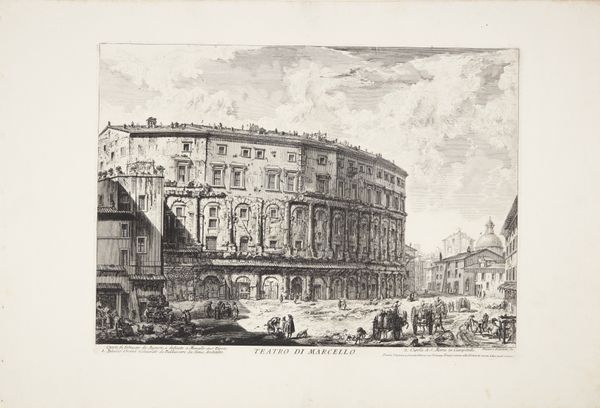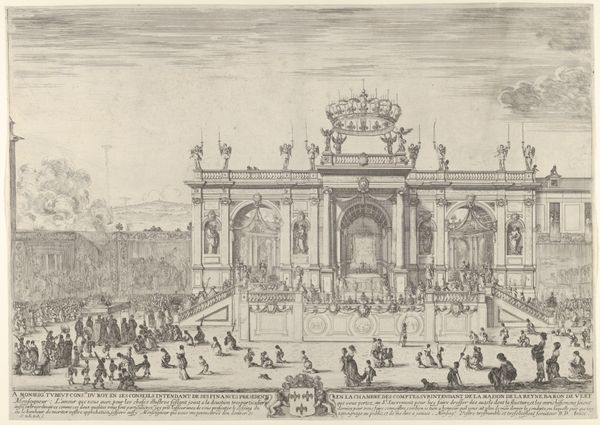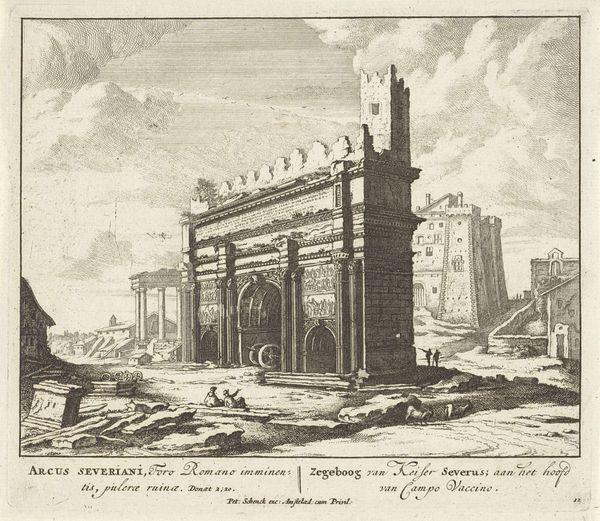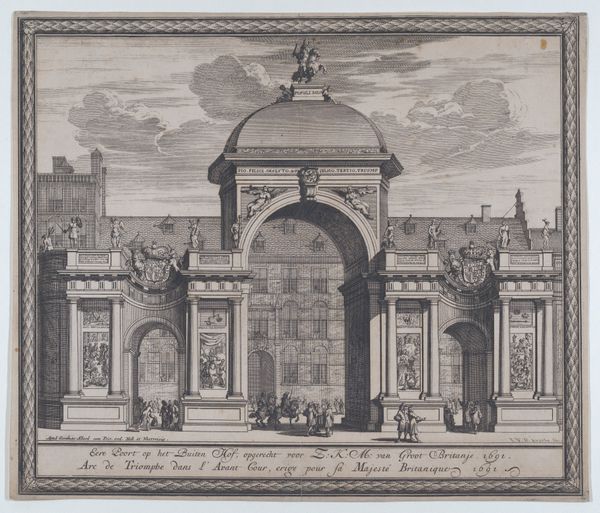
View of the Mausoleum of the Emperor Hadrian (now called Castel S. Angelo) from the rear, from Vedute di Roma (Roman Views) 1751 - 1761
0:00
0:00
drawing, print, architecture
#
architectural sketch
#
drawing
#
amateur sketch
#
light pencil work
#
quirky sketch
# print
#
pencil sketch
#
old engraving style
#
incomplete sketchy
#
sketchwork
#
pen-ink sketch
#
arch
#
pencil art
#
architecture
#
building
Dimensions: Sheet: 20 x 25 9/16 in. (50.8 x 65 cm) Plate: 17 5/16 x 21 15/16 in. (44 x 55.8 cm)
Copyright: Public Domain
Editor: So, this is Piranesi's "View of the Mausoleum of the Emperor Hadrian," an etching from between 1751 and 1761. The scale is incredible, but what really gets me is how Piranesi renders this massive structure with such delicate lines. What catches your eye about this piece? Curator: It’s fascinating how Piranesi captures the Castel Sant’Angelo. Beyond just architectural depiction, it’s laden with historical and symbolic weight, don’t you think? This wasn’t just Hadrian's tomb; consider how it transformed into a papal fortress. Do you see how he plays with that tension between the ancient and the early modern? Editor: I do see that! It’s like the mausoleum has layers of meaning, each building upon the last, both physically and historically. I'm wondering, do all the figures down in the front of the artwork bear specific significance or is it that they communicate how everyday people interacted with this symbol of power? Curator: Precisely! It's about continuity, and power. It highlights how structures like this become enmeshed in the lives of ordinary people, changing in function and appearance over centuries, but retaining a core symbolic value. The everyday activities juxtapose with the imposing architecture – it creates a dialogue. What stories do you imagine these figures tell? Editor: Maybe they are merchants, laborers, and pilgrims who were attracted by Rome and the mausoleum as centers of culture, and are just part of this eternal exchange between the city and the world. Thanks so much. I never would have considered the human connection on my own! Curator: That's wonderful. Piranesi reminds us that buildings are not just stones, but vessels of cultural memory. I also gained some useful insights from our dialogue; thanks for your perspectives.
Comments
No comments
Be the first to comment and join the conversation on the ultimate creative platform.

